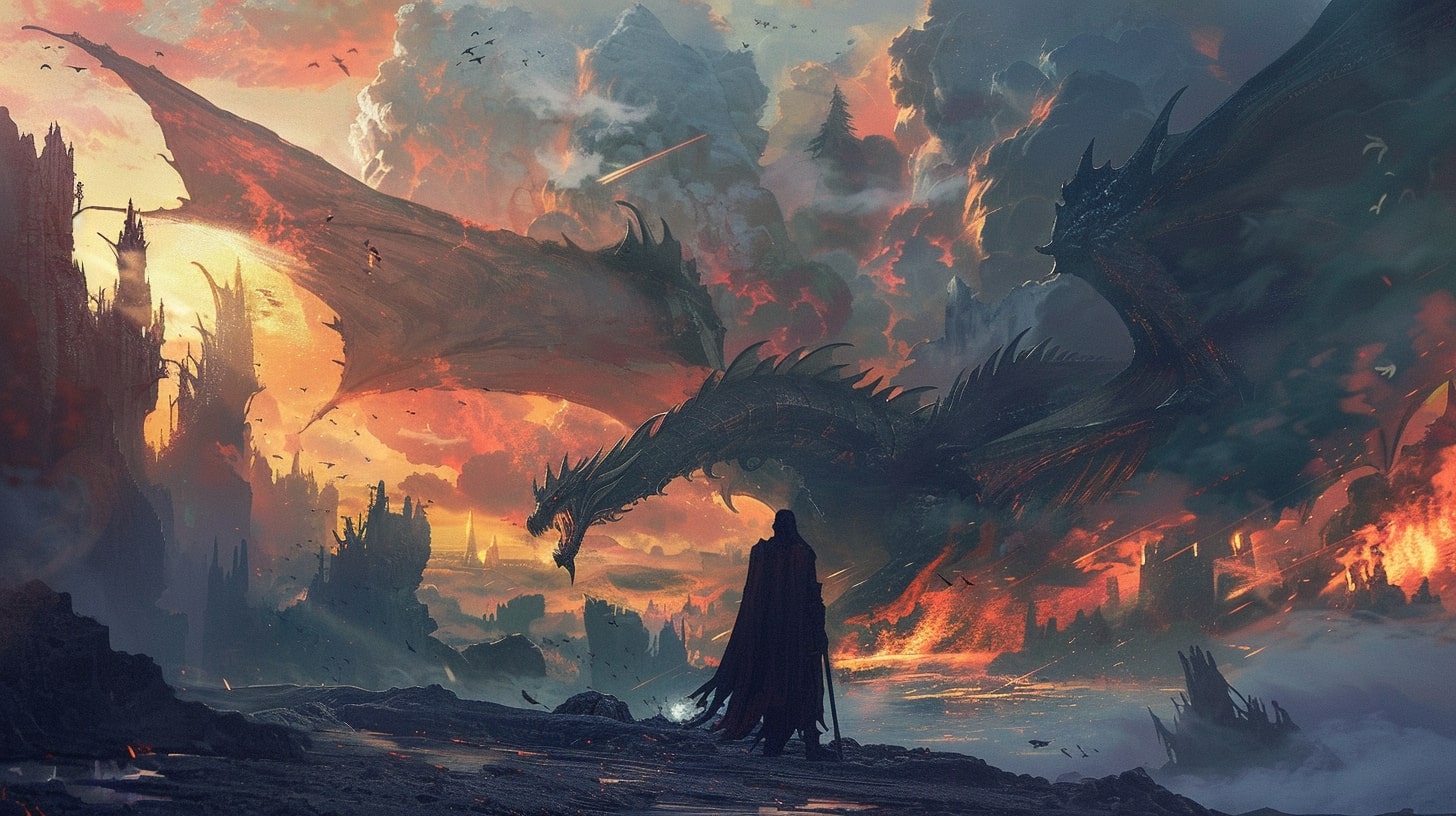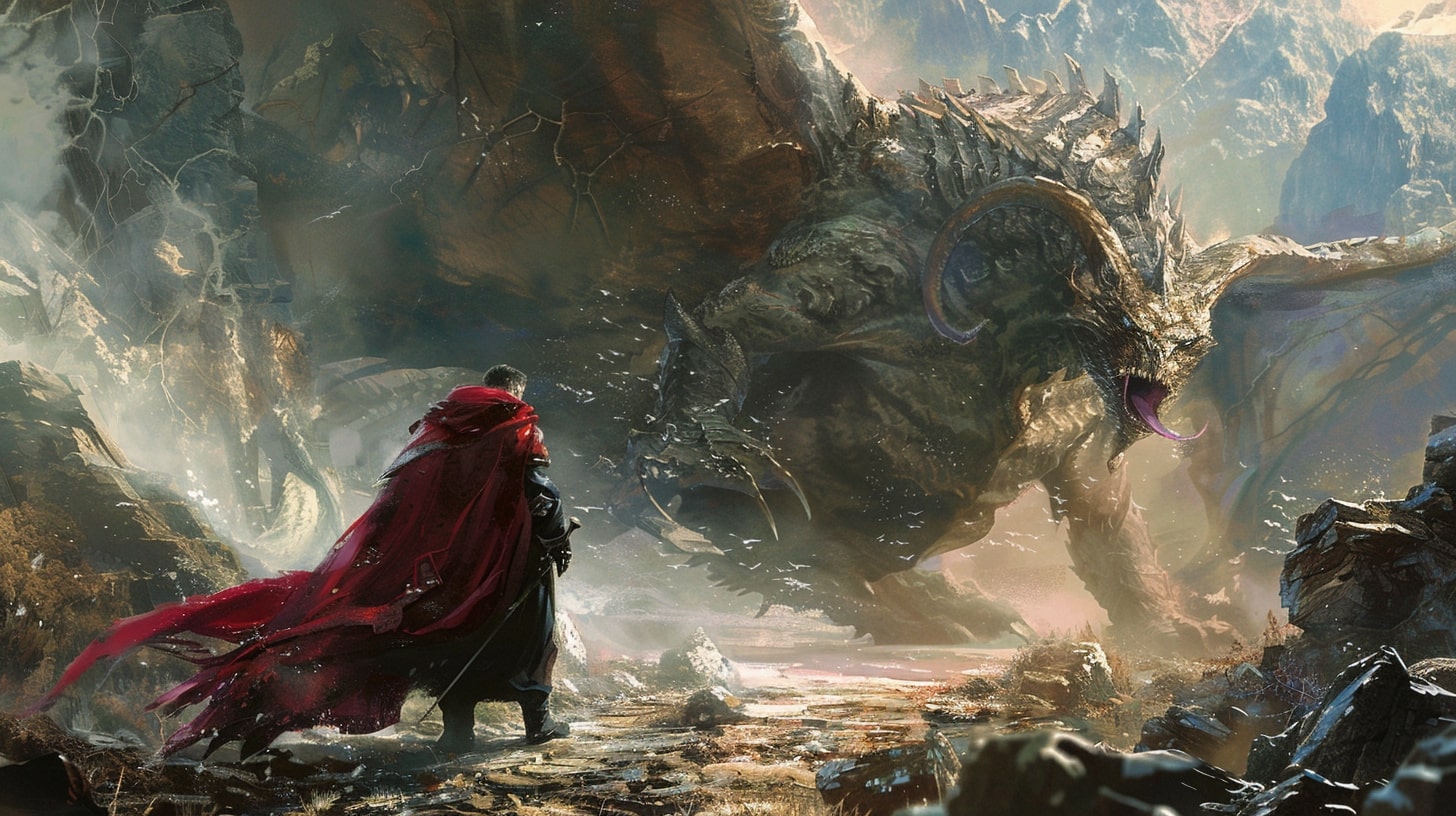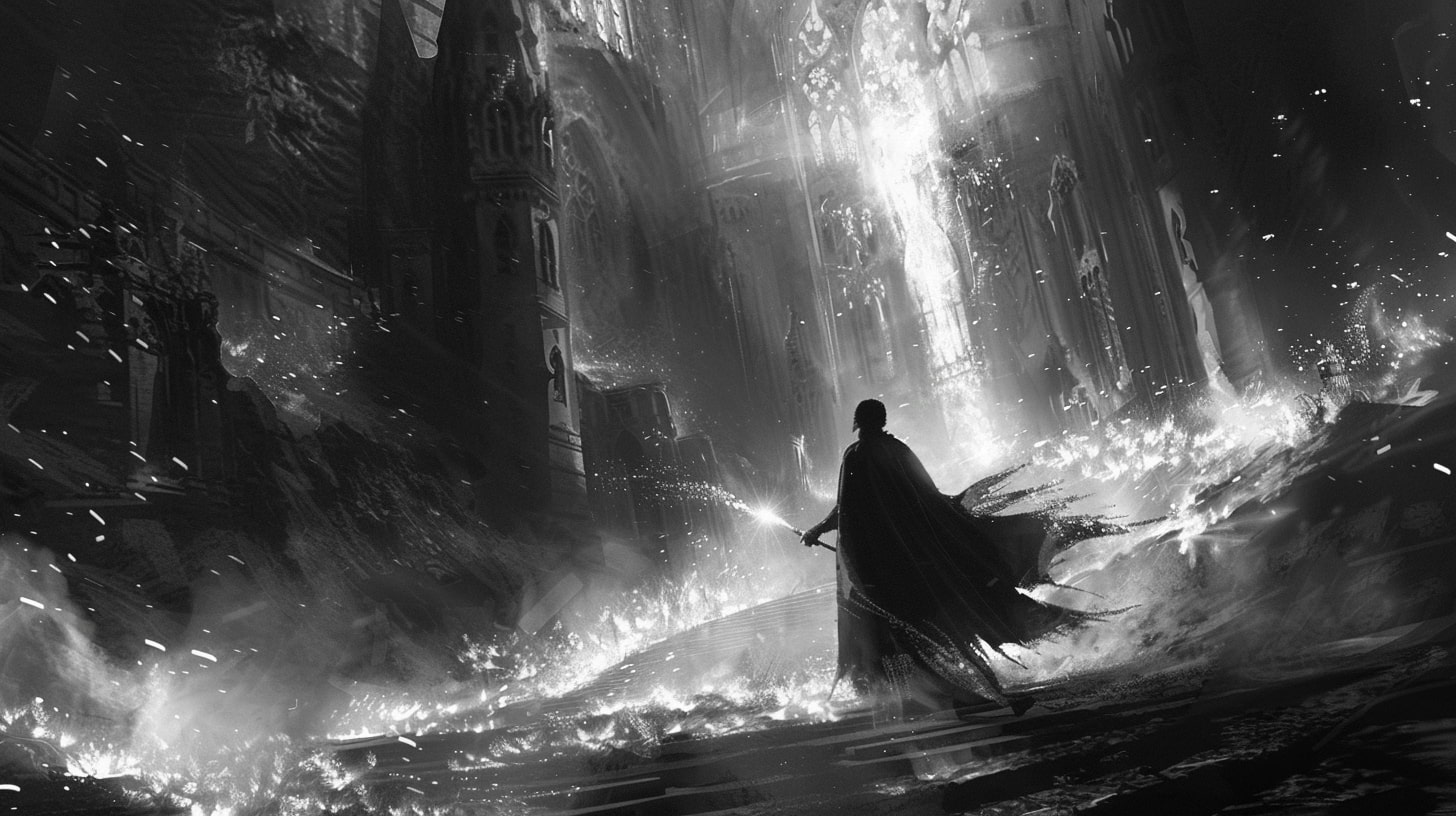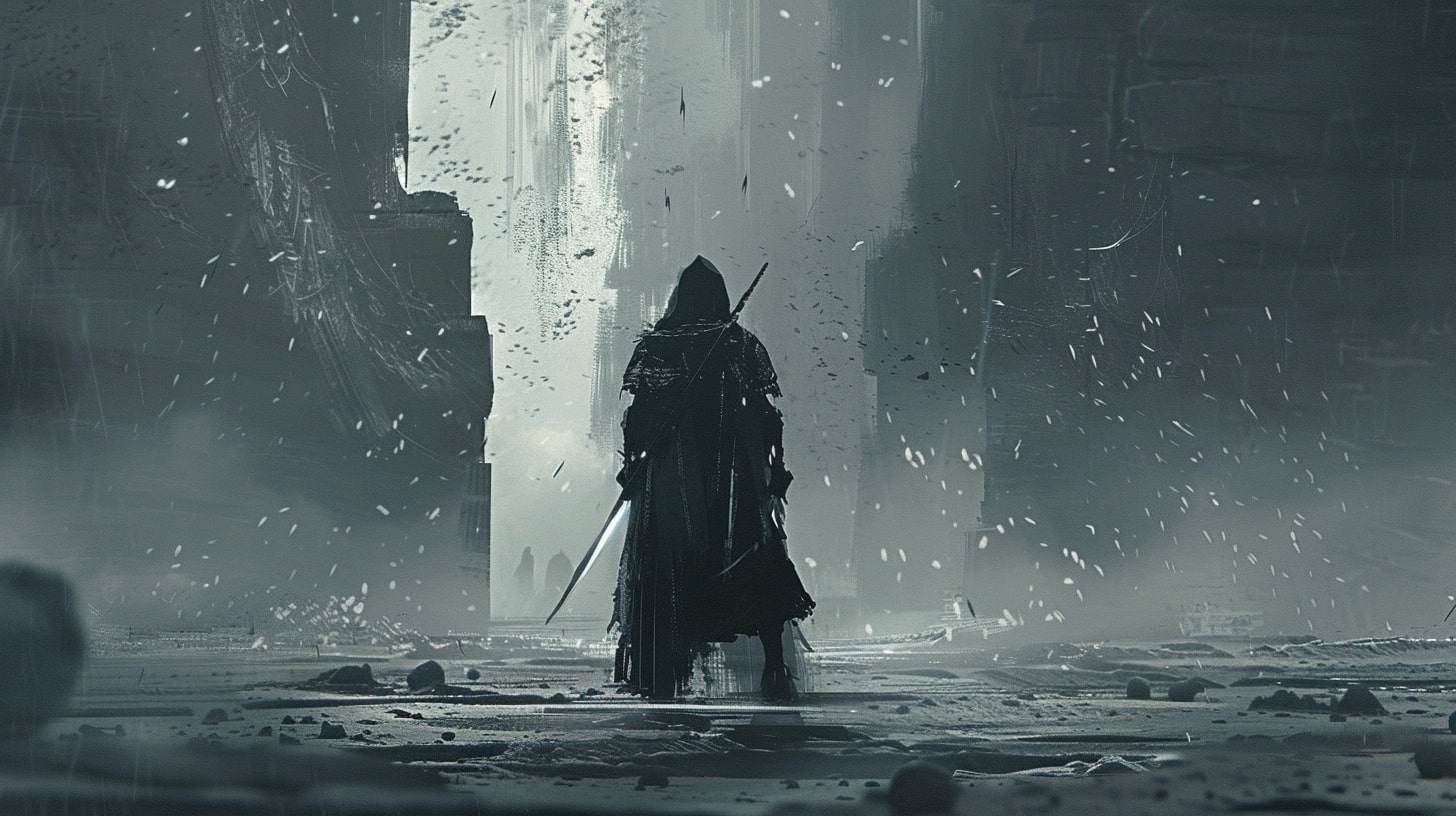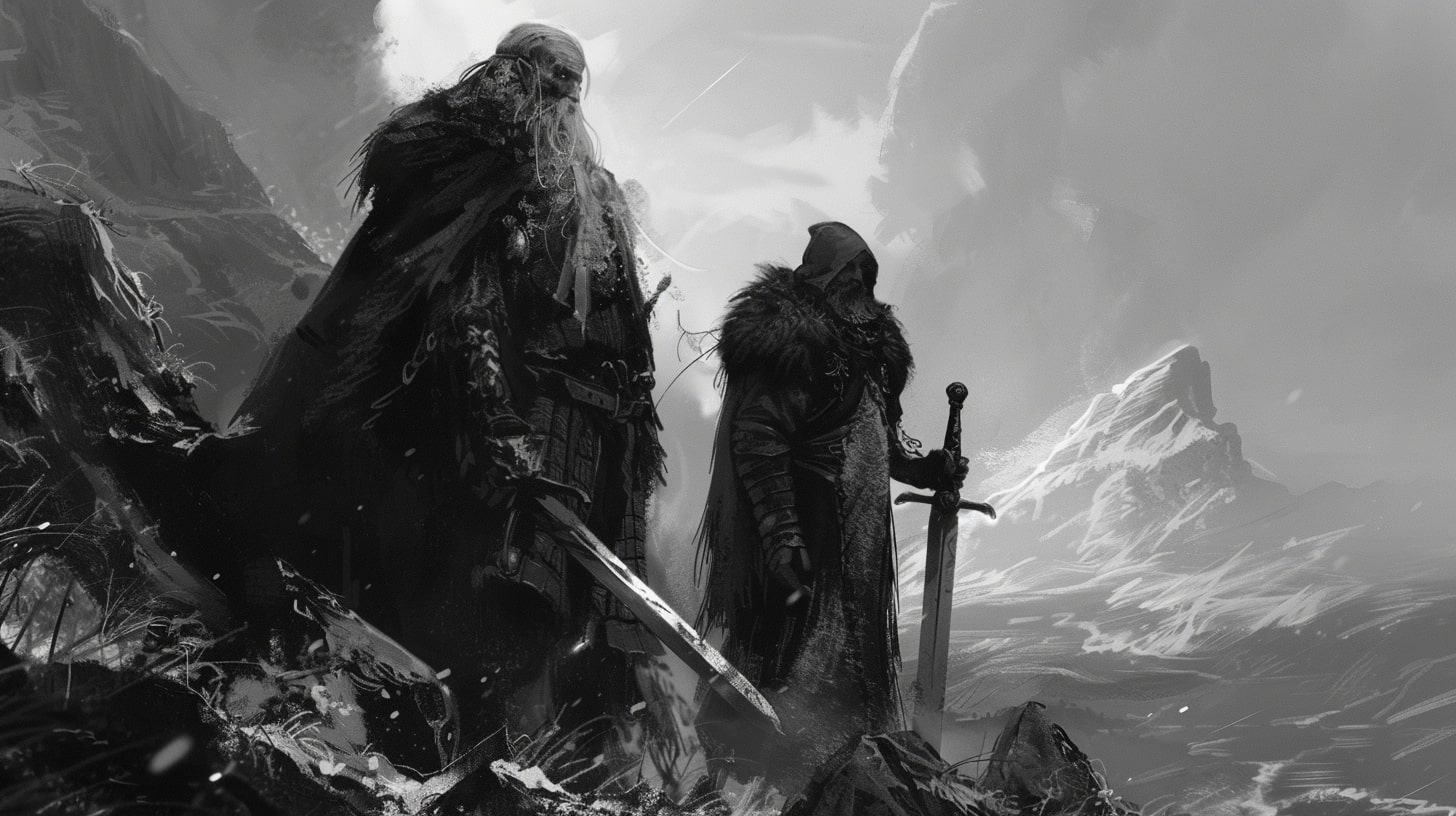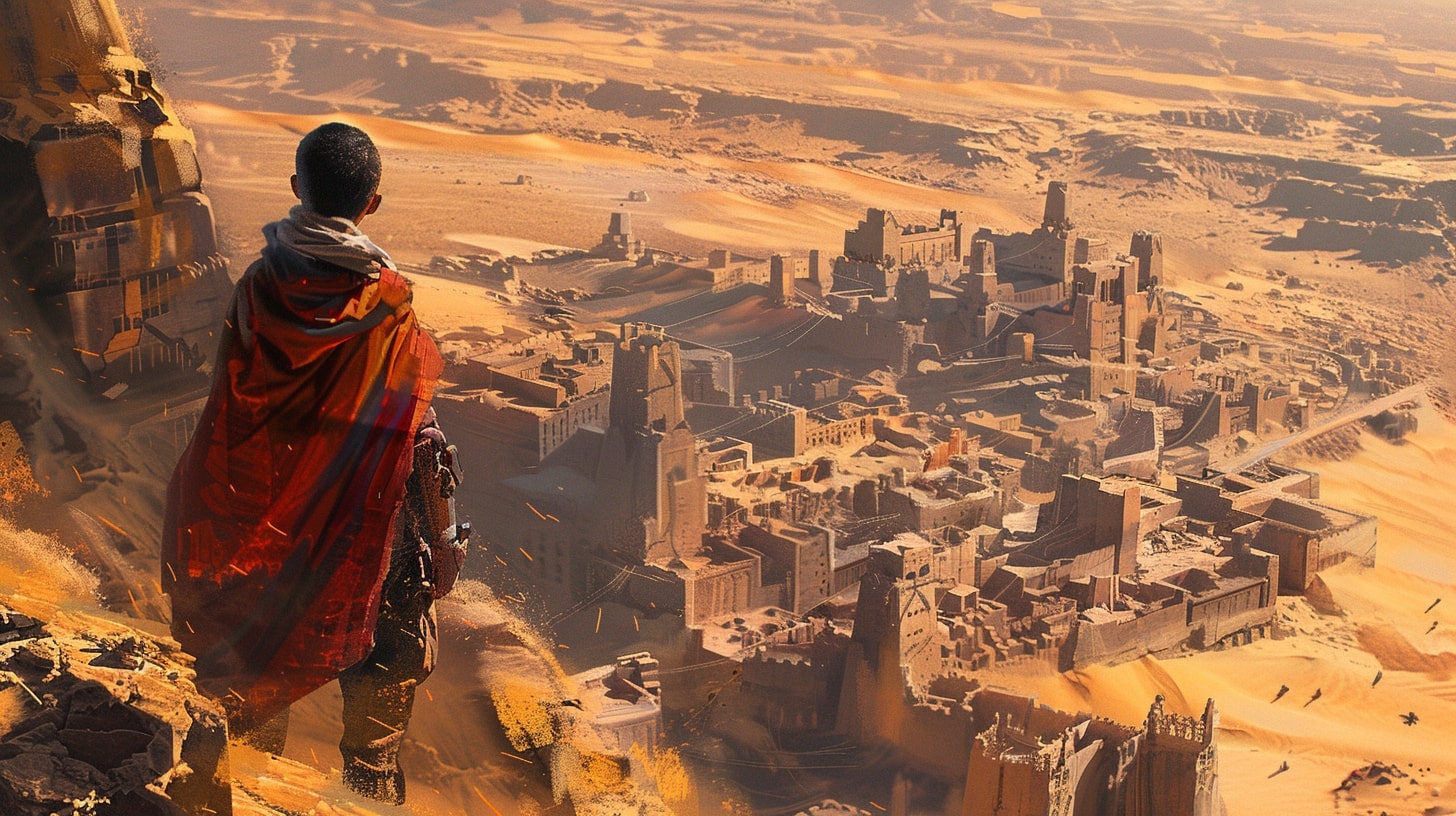The Art of Character Building
Welcome to the exciting world of character development!
Building a memorable character is the ultimate goal of any fantasy writer or worldbuilder. But how do you go about doing such a thing?
In this guide, I'm going to walk you through the different character building techniques that I use to build characters that my readers love.
Introduction to Character Development
Ah, characters – the heart and soul of any story. They are the ones who breathe life into the pages and make readers fall in love or despise them with a passion. But how does one go about creating these fascinating beings?
Character development is the process of crafting and shaping the individuals who will inhabit your story. It involves giving them distinct personalities, quirks, and motivations that will captivate your readers. Each character is like a puzzle piece, contributing to the overall tapestry of your narrative.
To develop your characters effectively, it's important to get to know them on a deeper level. Dive into their backstories, explore their desires and fears, and discover what makes them tick. The more you understand your characters, the more authentic and relatable they will become.
Importance of Unforgettable Characters
Picture this: you're reading a book or watching a movie, and you come across a character who instantly captures your attention. Their words, actions, and emotions feel so real that you can't help but become invested in their journey. These are the unforgettable characters that stay with us long after the story ends.
Unforgettable characters have the power to evoke emotions, spark conversations, and leave a lasting impact on your audience. They create a connection, drawing readers into the world you've created. Whether your characters are heroes, villains, or quirky sidekicks, they are the driving force behind the story.
When your characters are well-developed and memorable, they can elevate your storytelling to new heights. They add depth, complexity, and relatability to your narrative, making it more engaging and compelling. So, it's worth investing time and effort into crafting characters that will leave a lasting impression.
Now that you've been introduced to the art of character development and understand the importance of unforgettable characters, it's time to roll up your sleeves and start bringing your own characters to life.
In the next sections, we will explore various techniques for crafting memorable characters, breathing life into them, building character archetypes, and more. So, keep your creative juices flowing and let your characters shine on the stage of your story!

Character Building Techniques: Crafting Memorable Characters
Creating memorable characters is a vital aspect of storytelling. Whether you're writing a novel, screenplay, or even a game, developing characters that resonate with your audience is essential. In this section, we'll explore three powerful techniques for crafting unforgettable characters: creating compelling backstories, developing unique personalities, and designing distinct physical features.
Creating Compelling Backstories
A character's backstory is like the foundation of a building. It provides depth and context to their actions, motivations, and overall personality. To create a compelling backstory, consider the character's upbringing, experiences, and pivotal moments in their life. Ask yourself questions such as:
- What events shaped their beliefs and values?
- What challenges have they faced and overcome?
- What relationships have influenced them?
By delving into these aspects, you can create a rich tapestry of experiences that will shape your character's actions and decisions throughout your story. If you're looking for inspiration, check out our article on character backstory ideas for some helpful prompts and exercises.
Developing Unique Personalities
Every memorable character needs a distinct personality that sets them apart. Think about their quirks, strengths, weaknesses, and motivations. Are they witty, courageous, or perhaps introverted? It's important to create multidimensional characters that feel authentic and relatable.
To develop unique personalities, consider using a combination of character personality traits and flaws. These flaws add depth to your character and create opportunities for growth and development. Remember, no one is perfect, and flaws make characters more human and relatable.
Designing Distinct Physical Features
While physical appearance may not define a character entirely, it can contribute to their overall impression. Designing distinct physical features helps your character stand out visually in the minds of your readers or audience. Consider elements such as hair color, eye shape, body type, and style of dress.
However, don't rely solely on physical appearance to define your character. Their personality and actions should always take center stage. Physical features can be used as a way to enhance the character's uniqueness and complement their overall traits.
By combining these techniques, you can create characters that come alive on the page or screen. Remember to craft authentic dialogue that reflects their personalities and motivations, as well as giving them motivations and goals that drive their actions. For more guidance on character development, check out our article on writing realistic characters.
In the next section, we'll explore the importance of breathing life into characters by adding depth through flaws and vulnerabilities, as well as giving them motivations and goals to pursue. Let's dive deeper into the art of character development!

Breathing Life into Characters
Now that you have laid the foundation for your characters, it's time to breathe life into them and make them truly unforgettable. This section will explore three powerful techniques for building dynamic and relatable characters: giving characters motivations and goals, crafting authentic dialogue, and adding depth through flaws and vulnerabilities.
Giving Characters Motivations and Goals
To create compelling characters, it's important to understand what drives them. What are their deepest desires, fears, and aspirations? What motivates them to take action? By giving your characters strong motivations and clear goals, you make them more relatable and provide a driving force for their actions.
Consider the desires and goals that push your characters forward. Whether it's a quest for justice, a longing for love, or a hunger for power, these motivations will shape their decisions and shape the story. Remember to balance internal and external motivations to create well-rounded characters.
Crafting Authentic Dialogue
Dialogue is a powerful tool for revealing a character's personality, beliefs, and emotions. To make your characters come alive on the page, focus on crafting dialogue that feels authentic and true to their unique voices. Each character should have their own distinct way of speaking, reflecting their background, personality, and motivations.
Pay attention to their word choices, speech patterns, and tone. Are they formal or casual? Do they use slang or have a specific accent? By infusing your character's dialogue with these nuances, you create a more realistic and engaging reading experience. For more tips on developing compelling dialogue, check out our article on character dialogue and voice.
Adding Depth through Flaws and Vulnerabilities
Flaws and vulnerabilities are what make characters relatable and human. Nobody is perfect, and your characters shouldn't be either. By giving them flaws and vulnerabilities, you create opportunities for growth, conflict, and connection with your readers.
Consider the strengths and weaknesses of your characters. What are their biggest fears or insecurities? How do these flaws impact their relationships and decisions? Remember that flaws can also be a source of strength or uniqueness. They add complexity and depth to your characters, making them more memorable and compelling.
By implementing these techniques, you can breathe life into your characters and make them leap off the page. Remember to consider their motivations and goals, craft authentic dialogue, and add depth through flaws and vulnerabilities. Building unforgettable characters is a journey, and each step brings you closer to creating a cast of characters that will captivate your readers.

Building Character Archetypes
Now that you've delved into the techniques for crafting memorable characters, it's time to explore different character archetypes. These archetypes serve as powerful templates that can add depth and familiarity to your characters. In this section, we'll take a closer look at three popular archetypes: heroic, villainous, and quirky sidekick.
Exploring Heroic Archetypes
Ah, the heroes! The valiant warriors, the noble protectors, the chosen ones who embark on epic quests for justice. Heroic archetypes are beloved by audiences for their courage, determination, and unwavering sense of righteousness. Whether it's the reluctant hero, the wise mentor, or the charismatic leader, these characters inspire us to be better versions of ourselves.
To create a compelling heroic archetype, consider their motivations, goals, and the challenges they must overcome. Give them a strong moral compass and inner conflicts that test their resolve. Remember to infuse them with unique personality traits and flaws to make them relatable and multidimensional.
Delving into Villainous Archetypes
Every great hero needs a worthy adversary, and that's where villainous archetypes come into play. These characters are the embodiment of darkness, chaos, and all things sinister. From the cunning mastermind to the imposing brute, villainous archetypes add tension and conflict to your story.
To craft a compelling villainous archetype, explore their backstory and motivations. What drives them to commit acts of evil? What are their ultimate goals? Develop their strengths and weaknesses, and consider the psychological aspects that make them fascinating and complex. Remember, a great villain is more than just a one-dimensional antagonist; they should be as engaging and captivating as the hero they oppose.
Unleashing Quirky Sidekick Archetypes
Ah, the sidekicks! These lovable characters bring comic relief, support, and a touch of whimsy to your story. Quirky sidekick archetypes are often the friend or companion of the main hero, injecting humor and light-heartedness into intense situations.
When creating a quirky sidekick, let your imagination run wild. Give them unique physical features or exaggerated personality traits that set them apart from the other characters. They can be the voice of reason, the comic relief, or the unexpected hero when the chips are down. Just remember to make them more than just a punchline; give them their own goals, dreams, and obstacles to overcome.
By exploring these archetypes, you can add depth and variety to your character roster. Remember to infuse each archetype with its unique twists, traits, and motivations to make them stand out. Now, go forth and bring your characters to life!
For more tips on character development, check out our articles on character personality traits, character backstory ideas, and character development exercises. Happy crafting!
Putting It All Together
Now that you've learned various techniques for crafting memorable characters, it's time to put them all together and create dynamic and unforgettable individuals. The key to achieving this lies in blending different techniques, balancing depth and complexity, and constantly revisiting and refining your characters.
Blending Techniques for Dynamic Characters
Creating truly dynamic characters requires a combination of different techniques. You can start by developing a compelling backstory that shapes your character's experiences and motivations. This will provide a solid foundation for their actions and decisions throughout your story. Consider using our character backstory ideas to spark your creativity.
Next, focus on developing unique personalities that make your characters stand out. Think about their quirks, strengths, weaknesses, and how they interact with others. Our article on character personality traits can help you explore different facets of personality to bring depth to your characters.
To make your characters even more engaging, pay attention to their physical features. Design distinct attributes that reflect their personalities and add visual interest. For further inspiration, check out our article on character appearance and description.
Balancing Depth and Complexity
While it's important to create complex characters, it's equally crucial to strike a balance and avoid overwhelming your readers. Focus on layering your characters with depth by giving them motivations and goals that drive their actions. Explore their desires and aspirations, and use them to create compelling storylines. For more guidance, our article on character motivation in writing can provide valuable insights.
Craft authentic dialogue that reflects your characters' unique voices and personalities. Consider their backgrounds, education, and speech patterns to make their conversations more believable. Our article on character dialogue and voice offers tips for creating dialogue that brings your characters to life.
Remember that characters with flaws and vulnerabilities are often the most relatable and compelling. Don't be afraid to show their imperfections, as they add depth and make your characters more human. Explore our article on character traits and flaws to better understand how flaws can contribute to character development.
Revisiting and Refining Characters
Character development is an ongoing process. As you write, take the time to revisit and refine your characters. Consider how they have evolved throughout the story and whether their actions and decisions align with their established traits and motivations.
Seek feedback from beta readers or writing communities to gain fresh perspectives on your characters. Their insights can help you identify areas that need improvement and guide you in making your characters more compelling.
By blending different techniques, balancing depth and complexity, and continuously refining your characters, you can create truly unforgettable individuals that resonate with your readers. So grab your character development worksheet and start shaping your characters into the heroes, villains, or quirky sidekicks that will bring your story to life.


